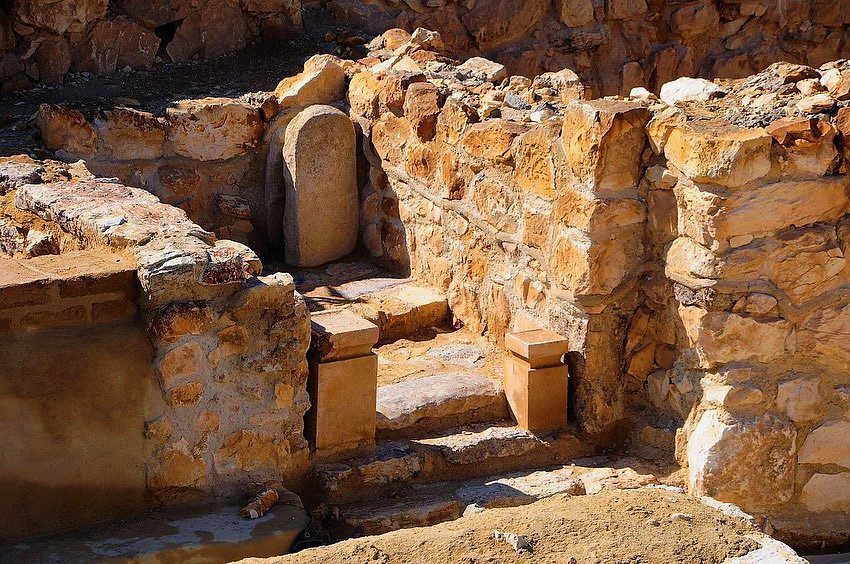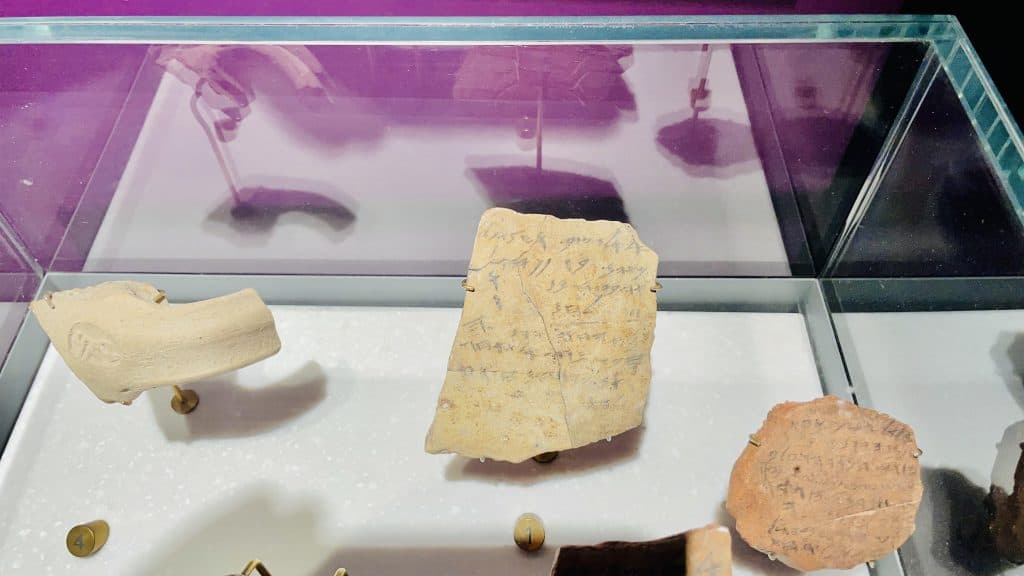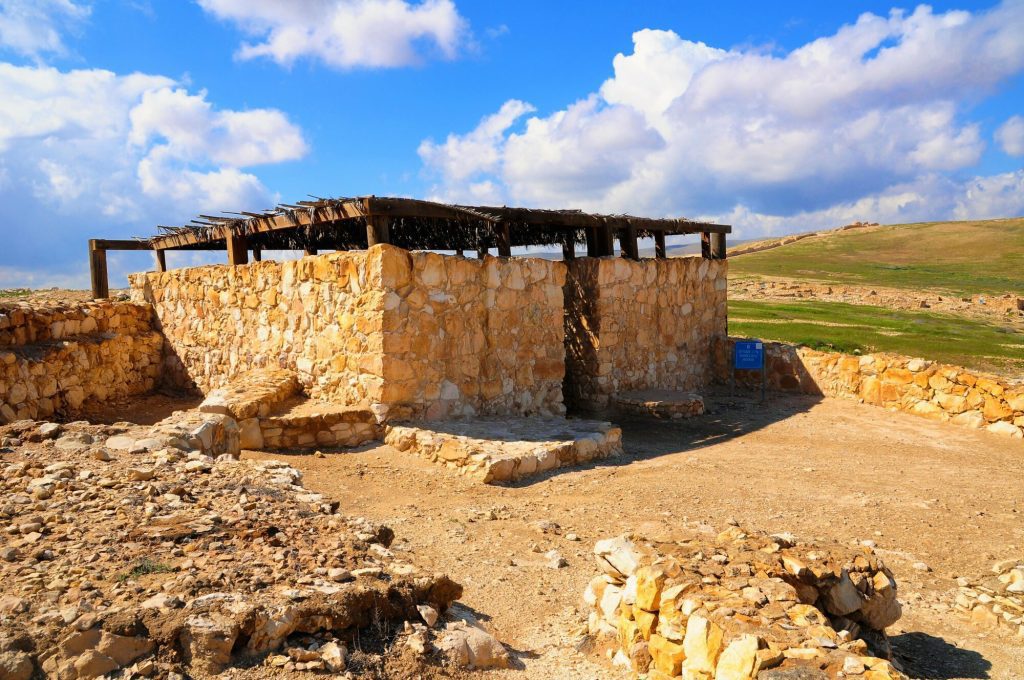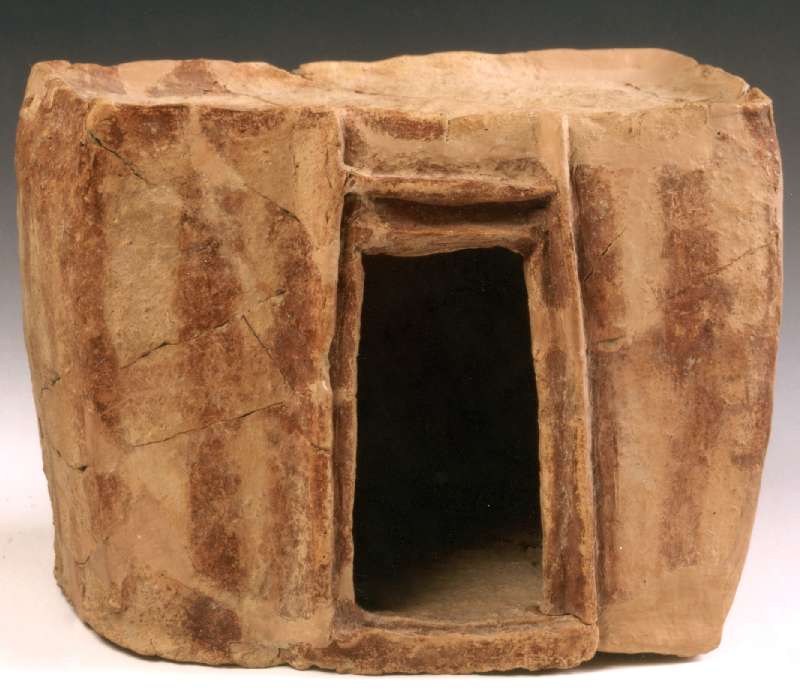This rare find, The Arad House, sheds light on the appearance of houses in Tel Arad. Arad’s houses were boxy, windowless, single-story structures with flat roofs and gutters for the collection of rainwater. They consisted of a main room used for sleeping, storage, and some food preparation, and a side room used for cooking. Livestock was kept in the courtyard. Other daily activities, such as spinning, weaving, and flint tool-making, were carried out there, as well.

Tel Arad was an ancient city 5,000 years ago. Without a doubt one of the best-preserved sites in Israel. Chifley because of the dry conditions of the Negev. Also in Tel Arad, something rare truly happened. Usually when you dig an archaeological tel; the different layers of civilization are kind of stacked up on top of each other. But in Tel Arad, the ancient city from the Bronze Age was found just under the surface. The archaeologists are headed by Prof. Yohanan Aharoni. He was the one that also found the Arad Ostracons.
So the excavators were amazed at how well the city was preserved; massive fortifications were discovered; many streets were slowly unearthed. Also among other things they found were impressive public structures alongside private dwellings. Those private homes contained many different finds.
The Ancient City of Arad
The city is dated to the Early Bronze Age II, 2650-3000 BCE (layers 1-3 of the Tel), which makes Arad one of the ancient cities in the region. Approximately around the year 3,500 BCE, In Mesopotamia, and perhaps in Egypt, the very first urban centers were established.

With successful farming and food storage, the nomadic style of hunting could be abandoned when farming was successful enough (after the invention of the plow) to produce harvests that could feed a whole city. Also, storing grain to be accessed year-round allowed a large group of people to be able to stay put in one area. After that, the development of skilled labor could form, as not everybody had to be out in the fields. And the rise of skilled labor led to rising and trade.
The Arad House
When a settlement is eventually abandoned, it is exposed to natural disasters or time that slowly destroys a site. Gradually the site gets destroyed, buildings collapse, and so on. Not to mention if it got destroyed in a war. As a result, when archaeologists come and excavate a site, what they find is only parts of a building. Usually what is exposed is the foundations of a building and the floor. These finds can give a lot of information about the structure’s outline. But you will never know for sure how the roof was built or for example did the home had windows. But in the excavations of Tel Arad, a rare find was found in one of the rooms. It was a clay box in the image of a house. It is 20cm tall, 28cm long, and 16cm wide.

The Main Features of the Arad House
It seems the roof was flat. At the roof base, there were holes to drain the rainfall that was collected into jugs to be used. Also, the entrance was through its width, uncommon for that period. The house had no windows. In layer II of Tel Arad, about 35 Arad Houses were found, and in them, lots of finds can shed light on the activity inside the house.
Now We know there are three different rooms: the main room, a secondary room, and a courtyard. The main room was used for living, storing food, and cooking. The secondary room was used sometimes as a kitchen and sometimes as a living area. The courtyard was used for storing the animals. The door was made from wood and did not survive. There was a column that was made from wood that was placed in the center of the house to support the roof.

Things Found Inside The Arad House
Lots of different grains were found inside the Arad House, mainly wheat and barley. It shows that the population was mostly cultivating the fields. Moreover, they found animal bones, primarily sheep, and goats that were used for eating. Different kinds of ceramics were used for cooking. Alongside cups and bowls. Other kinds of items that were found are tools used for weaving like needles that were made from bones. Even board games were found, 35 of them.


